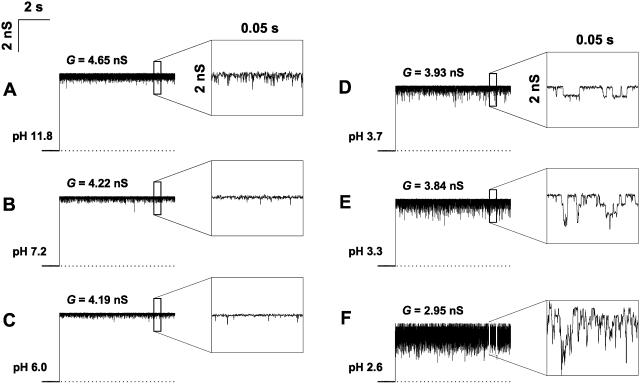FIGURE 4.
Changing pH changes ion current through a fully open channel in at least two ways. First, the increase in proton concentration decreases both the average current and the maximum current, measured using 0.1-ms averaging. Second, it changes the character of current fluctuations. At pH values close to neutral, (B and C) ion current is most stable and only rare fast downward transients are seen at a finer timescale of the insets on the right. Low pH (D) considerably increases intensity of the open channel noise; stepwise current transients with the amplitude corresponding to ∼1/5 of one monomer conductance are easily resolved (inset). Further solution acidification increases the frequency of these transients (E and F) decreasing the average conductance of the fully open channel. At pH 2.6, the maximum conductance is also decreased by ∼20% in comparison with neutral pH (data in F versus data in B). In basic solutions (A) channel conductance is higher than at neutral pH. Current noise increases at high pH, but the time-resolved stepwise current transients are not observed (inset). Recordings were obtained in 1 M KCl bathing solution under 100 mV of applied voltage. Time resolution for all graphs was 0.1 ms.

